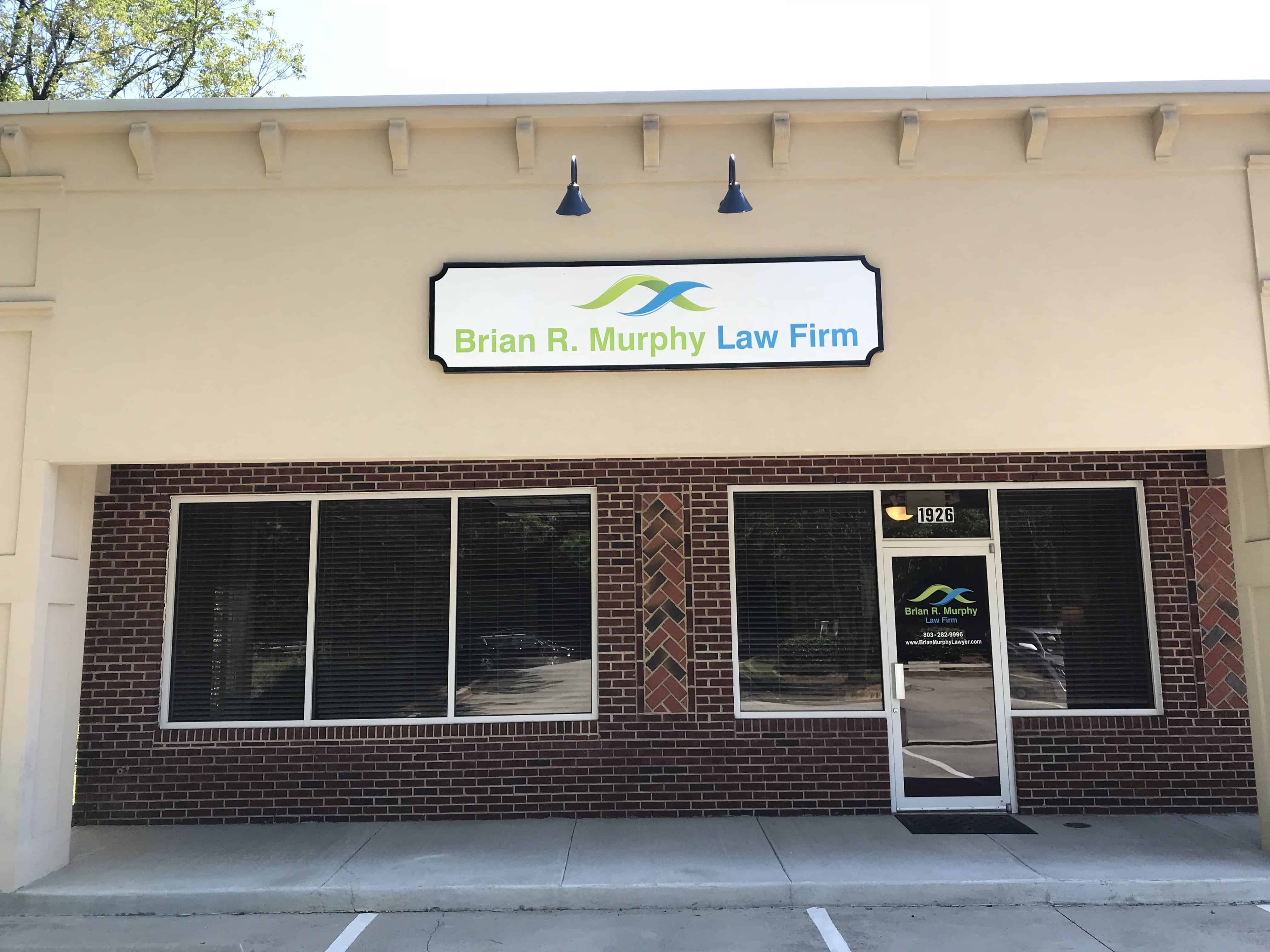Category Archives for "Blog"

Written By Robert Polenik

Robert Polenik is the owner of Brutal Iron Gym in Rock Hill, SC. He has many degrees and certifications in his 15 years of personal training history. His goal for Brutal Iron Gym is to teach people how to take control of their health and thus their happiness. The better a person feels both inside and out, the more likely they will be able to pursue their dreams.
Throughout the course of life, it’s an almost certainty that every person will suffer from restricted movement whether it’s due to an injury, muscular decay caused by inactivity, or even an issue related to over-activity. The human body is an amazing “machine” but, like all machines, it requires continual, intentional maintenance or it runs the risk of breaking down. Throughout my career as a personal trainer (15+ years) I’ve seen first-hand a multitude of physical issues such as injuries to the spinal cord, shoulders, hips, knees, ankles, and the list goes on. And, in every case, every single one, the “cure” was… movement!!!
A few years ago a man named Mike walked into my gym and introduced himself as “fat and lazy” and said he’d gotten that way due to a back injury. About 15 years prior to us meeting he experienced a back injury while knee-boarding and his doctor at that time told him he’d have restricted movement for the rest of his life and advised him to avoid strenuous activity. Well, that activity-avoidance quickly turned into muscle loss and fat gain to the point where one day, in his words, “I saw a picture of myself with a friend and it just struck me… I looked at myself in disbelief… who was that fat guy in the picture… is that really me?!” It was on that day, of seeing the picture, that he came to see me. That was 4 years ago, he was 50 years old at the time, and when we first started weight training he hadn’t performed basic lifts such as squats, bench press, or deadlifts in decades and he was experiencing daily, chronic back pain.
Now, 4 years later, and at the age of 54 years old, he can squat over 450lbs, bench over 350lbs, and deadlift over 500lbs. And, the best number of all… he has zero back pain.I have dozens and dozens of other similar stories; one of my other favorites is of my mother. At the age of 47 she was experiencing leg tingling and ankle pain at night to the point where she could barely fall asleep without an ordeal of wrapping her ankles, wearing multiple socks, and then still having to just endure the pain until she’d drift off to sleep from exhaustion. We soon began strength training with weights. Within a few months, she’d dropped a good bit of body fat and her legs and ankles had become stronger to the point where the nightly pains ended. But, she learned to love the process of working out so much that we continued to train and she did her first bodybuilding contest at the age of 50 years old. And since that contest she’s done 2 more and participated in 3 powerlifting meets. At the age of 59 years young she can squat 250lbs, bench 120lb (her body weight) and deadlift 290lbs!
These are just two examples of many of how inactivity, not moving, caused the body to decay and the person lost their health and happiness; however, through movement, through strengthening their bodies, they regained their health and even at “advanced age” they’re feeling stronger, healthier, and most importantly, happier than ever!
If you enjoyed this article please consider sharing it for your friends!
This article was originally found in our newsletter. If you would like to receive our newsletter please email inbox@brmurphylawfirm.com.

Written By Laura Cogbill

When I first started working for the Brian R. Murphy Law Firm years ago, we were a Personal Injury Law Firm. Over the years, I've helped resolve hundreds of car wreck cases, and Brian has successfully settled many premises claim as well. If you or someone you know has been hurt in a collision, or on someone else's property, we can absolutely help, be it answering your questions or taking on the case. With the addition of attorney Andy Cogbill, we can now fully work with North Carolina cases as well as South Carolina claims, from opening the claim to filing a lawsuit when necessary.
But we are now far more than a NC and SC Personal Injury Law Firm. We craft wills and powers of attorney. Andy has a background in foreclosure and will be expanding his practice area into special needs law and related guardianship in the years to come.
If you have a case that does not fall into our primary areas of practice, we have strong relationships with attorneys all over the Carolinas. We can even find a good fit for you if you have a case in another state. We consider you part of our law firm family, and we want to be sure that you get the best representation possible.
All this is to say, that if you have a legal need, we want you to call us first. We treasure the relationships we've formed with you over the years, and we always love to hear from you. We look forward to helping you in any way we can, and we are grateful for the referrals you send our way to grow our firm family.
We continue to expand our practice areas, our geographic reach, and our referral network:
Thank you for being such a huge part of our vision of growth and personalized client service.
If you enjoyed this article please consider sharing it for your friends!
This article was originally found in our newsletter. If you would like to receive our newsletter please email inbox@brmurphylawfirm.com.

Written By Johannesmeyer & Sawyer, PLLC

You’ve worked hard your entire life to build financial security for your family. One day, you hope the legacy you leave allows your loved ones the financial peace-of-mind they need to lead happy, fulfilling lives. It’s a beautiful sentiment, but are you prepared? At helm., we’ve provided legal counsel to all too many distraught families whose assets haven’t been managed – and planned for – correctly. We’ve learned that what you do today determines whether you leave behind uncertainty and confusion or hope for the future.
Here are four absolutely essential legal steps you need to take now to protect your family’s assets.
Write a Will
Everyone knows they need a will; no one wants to write one. We understand. Writing a will reminds you of your mortality and can bring up complicated questions about loyalty and family dynamics. Whatever unpleasantness you imagine would result from drafting a legal will now, multiply that tenfold once the pain of loss is added to the mix.
Regarless of your assets, they're going somewhere after you're gone. It's in the best interest of your family that you work with a licensed attorney to determine exactly how you'd like those funds administered, particularly if your family structure includes, minors, secondary spouses, or blended families.
Consider Trusts
There's a common misconception that trusts are only for the ultra-rich. This couldn't be further from the truth. Trusts are, in fact, excellent vehicles for your assets if you have specific wishes about how and when those assets should be distributed. They can also help your family avoid costly taxes or an extended probate period after you're gone.
There are literally dozens of types of trusts; a lawyer can help you determine which is best for your specific situation. A few of the most common kinds of trusts employed in an asset protection plan incude living trusts, special needs trusts, and trusts for minor children.
Power of Attorney
In the age of modern medicine, power of attorney is more crucial than ever. In the event you're unable to make decisions on your own (perhaps as a result of an accident, advanced-stage Alzheimer's, or a medical coma), having power of attorney documents in place can help your loved ones avoid painful feelings of doubt and regret.
The power of attorney documents you need to consider when estate planning include a financial power of attorney and a health power of attorney. In conjunction with the latterm it's also recommended that you draft a 'living will' which gives doctors (and your family) explicit instructions regarding your end-of-life care.
Review Your Plan
Many times people will spend a great deal of time and effort crafting a perfectly-viable estate plan for the future. Then ten years pass circumstances change, and that plan is no longer appropriate. An estate plan isn't much good to your family if it's outdated, incomplete, pr doesn't include directives regarding your current financial state.
Common life changes (divorce, births, switching jobs, moving to a new stat, etc.) can drastically alter the relevancy of your plan. It's a good idea once you create an estate plan to review it holistically with an attorney every 3-5 years.
If you enjoyed this article please consider sharing it for your friends!
This article was originally found on one of our friend's websites please visit Click Here to see the original post.

Written By Brian R Murphy

As a parent of elementary-age children and spouse of a teacher, I’ve found that the school calendar drives my family’s activities and seasons. I know that summer is approaching because school testing is completing and classes are planning end of year parties, recognitions, and field days. It’s time to start preparing for summer.
Since our firm is dedicated to pursuing justice for people who have been hurt by the wrongdoing of others, we often see very bad things happen to good people. Often catastrophic injures occur in the blink of an eye. While you can’t control the safety-rule-breaking behavior of others, here are some actions you can take to protect you and your family this summer.
Prepare your Vehicles
The summer driving season can be hectic. More vehicles travel our roadways and bring more collisions, flat tires, and breakdowns. Here are some tips from AAA:
Prepare for Outdoor Fun
Summer is a great time to play outdoors. It’s time to play in the water, sun, and woods. To reduce risk, consider the following safety tips from the Centers for Disease Control and Prevention:
Prepare Your Teens for a Summer Job
Summer is a great time for teens to get work experience to build character and skills. Here are some important tips to keep them safe:
If you enjoyed this article please consider sharing it for your friends!
This article was originally found in our newsletter. If you would like to receive our newsletter please email inbox@brmurphylawfirm.com.

Written By Andy Cogbill

Waving people in through stopped traffic, or driving through traffic when someone waves you in, creates a dangerous situation and can easily result in a crash. If you’ve been driving for very long, you’ve probably encountered this situation. You’ve just come through a light and you’re coming up to a left turn. Traffic on the other side of the road is backed up to the intersection from the light you’ve just come through. A driver in the opposite lane can’t go through the intersection, so they stop and don’t block the intersection – leaving a space for you to turn in. Should you make the turn? The stopped driver is waving you through, does that change anything?
Whether you make the turn depends on traffic and visibility. If you can see that there is no oncoming traffic, or that all oncoming traffic is stopped you can safely make the turn. You have to keep in mind that oncoming traffic has the right of way, regardless of whether someone is waving at you. The law requires the person making the left turn to yield to oncoming traffic. If a collision occurs you will most likely be found at fault for failing to yield – regardless of the person waving.
The fact that the other driver is waving you through shouldn’t change your decision making on the turn, but it often does. People feel rushed to turn quickly while they have the chance, some may feel pressured to turn by the person waving, or they assume the other driver has checked traffic. Unfortunately, these feelings don’t make the turn any safer, and in fact tend to pressure the person turning to rush. Who knows whether the person waving has checked other traffic, they could be waving at a fly in their car. This can create a dangerous situation, particularly when turning across multiple lanes of traffic. The turning driver may be safe crossing in front of the driver waving – but a vehicle coming up in the far lane unseen can result in a bad crash.
As traffic gets busier in Fort Mill, Rock Hill, and particularly Charlotte, following the rules of the road becomes even more important. The rules of the road – yield to oncoming traffic with the right-of-way, stop at signs and signals, don’t follow too closely, and so forth – are designed to keep us safer on the roads and to let us predict what other drivers will do. These rules are even more important with busy traffic because busy traffic means less time to make decisions, less visibility, and less room for error. When someone waves at you to come through stopped traffic remember you don’t have the right-of-way. Look for yourself, take your time and be sure that turning is safe – don’t rely on the other driver waving you through.
If you see me out there on the road, feel free to wave, but please don’t be offended if I just wait for traffic to clear.
If you enjoyed this article please consider sharing it for your friends!
This article was originally found in our newsletter. If you would like to receive our newsletter please email inbox@brmurphylawfirm.com.

Written By Andy Cogbill

In the news, you may periodically hear about testing on self-driving cars or trucks, but how soon can you expect to start seeing self-driving cars on the road near you? While it will depend on how testing on automated safety features goes, there are strong arguments that it will be as soon as possible. According to Department of Transportation statistics, 94% of serious crashes are due to human error[1], and if that number can be reduced, then there would be a corresponding reduction in deaths and serious injuries due to motor vehicle crashes[2].
The Department of Transportation National Highway Traffic Safety Administration predicts some time after 2025 for fully self-driving vehicles. In the meantime, driver assistance safety features like Rearview Cameras, Automatic Emergency Braking, and Blind Spot Alerts are becoming more available in a greater price range of vehicles. More manufacturers are starting to test partially automated safety features like Adaptive Cruise Control, Self-Parking, and sensors that allow the car to help the driver maintain their lane in vehicles on the market and not just in the lab.
For example, Mazda has said that nearly all of their 2018 model vehicles will have forward-collision warning and automatic emergency braking as standard safety equipment. Once one manufacturer starts to provide safety systems as features rather than options, other manufacturers often find themselves under a lot of pressure to do the same or risk being left behind by car buyers.
Newer technologies take greater advantage of more powerful computers and sensors able to be installed on vehicles. Rather than making vehicles stronger and more able to survive a crash, the goal with these technologies is to make a vehicle more able to assist a driver in avoiding a crash in the first place. Car manufacturers still have a way to go to reach truly self-driving cars, and 2025 may be an optimistic guess as to when they will hit the market. That being said, I believe we can expect to see more emphasis on automated safety features as standard equipment on new cars and steady progress towards fully self-driving cars in the not-too-distant future.
[1] See https://www.nhtsa.gov/technology-innovation/automated-vehicles-safety
[2] That same website cites a statistic that 37,461 people were killed in motor vehicle crashes in 2016, so approximately 35,213 of those deaths were due to human error. If new standard safety features could reduce human error crashes by even 10%, that would save over 3,500 lives each year.
If you enjoyed this article please consider sharing it for your friends!
This article was originally found in our newsletter. If you would like to receive our newsletter please email inbox@brmurphylawfirm.com.

Written By Brian R Murphy

Joy and I had the wonderful opportunity to visit Monticello last May. Monticello is Thomas Jefferson’s plantation home in Virginia. Joy and I were in awe of this American landmark. However, we were also struck by competing emotions. One is reverence at being on the grounds of one of our Founding Fathers. The other is a much more ominous emotion.
It is obvious why Jefferson chose this spot to build his mansion. The view is one of the most amazing I have ever seen. The house is situated on top of a mountain, overlooking miles and miles of the country. The grounds are beautiful. The house is inspiring. However, slavery’s impact on this place and in the building of our nation smacked me in the face.
How can someone write about the equality of all people while being a source of great cruelty? There is no other conclusion one can reach but to condemn Thomas Jefferson as a hypocrite. The non-profit that runs Monticello doesn’t sugar coat how slaves were treated. They point out this treatment and let Monticello’s visitors experience and reflect on those hypocrisies.
I began to consider whether Jefferson’s understood and battled his hypocrisy. I wondered if Jefferson concluded that his words should define a fundamental truth we could all work towards. That gave me hope: That even in the face of our own failings, we can look forward and see positive change. We all face hypocrisy in our lives. Our hope is that our failures can ignite growth.
Thomas Jefferson defined a fundamental truth that he failed to uphold. However, his words inspired generations of positive change.
If you enjoyed this article please consider sharing it for your friends!
This article was originally found in our newsletter. If you would like to receive our newsletter please email inbox@brmurphylawfirm.com.

Written By Frank Bentley

I am pleased to announce that we have officially moved into our new office!
We have been bursting at the seams and in need of more space for a long time. We are finally able to say we are “home.” No more telling people to “park in this lot, then come in this door, then find the elevator, go to the third floor, take a right out of the elevator and come to the last door on the right.”
Now we can say “Come to 1926 India Hook Road in Rock Hill.” It just rolls off the tongue.
We understand that some of our clients may enjoy meeting with us in Fort Mill and we do still have that option; however, we want to welcome everyone to come visit our lovely main office in Rock Hill.
If you enjoyed this article please consider sharing it for your friends!

Written By Frank Bentley

So all month I have been writing and researching distracted driving. I truly hope this helps to shine a light on how important this topic is to lots of people in the area.
While distracted driving continues to be an enormous problem, one promising statistic from the National Highway Traffic Safety Administration(NHTSA) indicates that more people are recognizing the dangers:
When people see this statistic, I hope they pat themselves on the back, but remember that we still need to carefully consider our driving behaviors in all areas.
47,402 lives could have been saved with just a little bit of work.
Are you treating our roads with the respect they need?
If you enjoyed this article please consider sharing it for your friends!

Written By Frank Bentley

After last week’s blog I was told that I really should have included some statistics on how texting and driving actually stacks up against driving under the influence. As a result, I scoured the internet and got some solid information about how bad texting and driving is for our country.
Something you should keep in mind is that it takes years for the Departments of Transportation in the various states to compile the information and make it available to the public, so all of the numbers below are based on the newest available information.
Distracted driving is a very important topic and the numbers don’t lie. Last week’s blog talked about the laws and what happens if you are caught texting vs drinking and driving. Do you think the statistics and the laws are balanced? Do the laws regarding distracted driving make it important to the drivers to follow the safety rule?
If you enjoyed this article please consider sharing it for your friends!